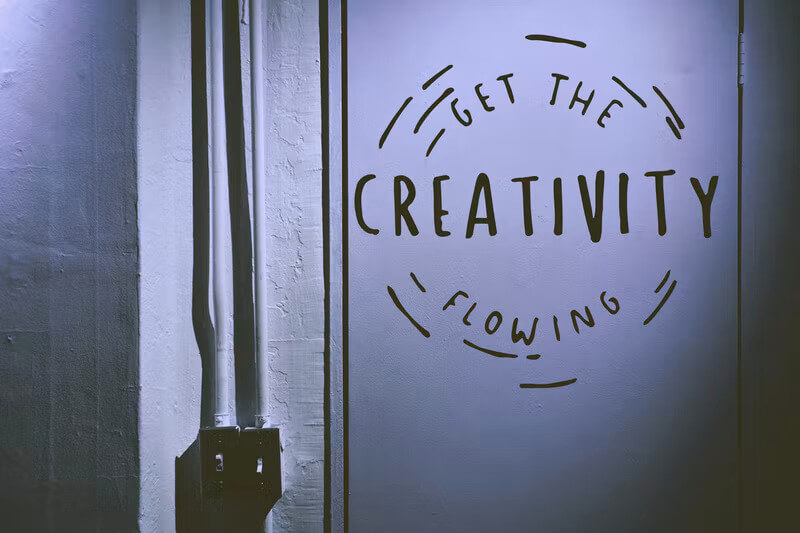Wouldn’t it be amazing if every student had the creative brilliance of Pablo Picasso, Walt Disney, or Marie Curie? Imagine a classroom full of creative, engaged students, eager to learn and share ideas. How do we make this creative paradise a reality?
First, we need to dispel some myths about creativity, starting with perhaps the most damaging: creativity and intelligence are the same thing; if someone is creative it’s because they are naturally more intelligent than the average person. Not only is this view incredibly restrictive and ill-conceived, it’s also empirically false. Although many people continue to equate intelligence with genius, a pioneering 20th-century psychologist by the name of Lewis Terman proved it wrong. Lewis Terman studied genius. Over three decades, he sought a unifying framework to understand what made genius (and geniuses) occur. Sorting through both genetic and environmental factors, he came to a crucial conclusion: having a high IQ is not equivalent to being highly creative. Subsequent studies by other researchers have reinforced Terman’s conclusions, leading to what’s known as the threshold theory, which states that above a certain level, intelligence doesn’t have much effect on creativity. Yes, most creative people are pretty smart, but they don’t have to be that smart, at least as measured by conventional intelligence tests. An IQ of 120, indicating that someone is very smart but not exceptionally so, is generally considered sufficient for creative genius.
This is great news for almost everyone because it means creativity, like any other skill, can be learned and improved over time. We encourage students to find these pivotal skills that fall into the growth mindset category coined by University of Pennsylvania professor Carol Dweck. When something as powerful as creativity is viewed as within a student’s control, we can turn a challenge into an opportunity. This is a cornerstone of our unique executive function curriculum. Powerful EF skills like organization, time management, learning skills, and impression management are teachable (and learnable), meaning any student is capable of success with the right coaching… but I digress. Let’s get back to creativity.
Non-creative behavior is learned; it is not innate. A creative performance researcher named George Land conducted a study of 1,600 five-year-olds in the 1960s to study whether creativity was nature or nurture. The results were astounding. Almost 98 percent of the five-year-old children scored in the “highly creative” range, but their creativity dramatically decreased as they aged. Dr. Land tested each subject’s creativity every five years following the initial study. during five-year increments. When the same children from the initial study were 10-years-old, only 30 percent scored in the highly creative range. It gets worse. This number dropped to 12 percent by age 15 and just 2 percent by age 25. Effectively, as we age, creativity is trained out of us, but how does this happen? More importantly, how can we, as parents and educators, prevent it?
Share this data and teach children to protect their inner five-year-old. Yes, it’s that simple. By teaching students that creativity (or lack thereof) is taught, not innate, we instill a growth mindset. Students see creativity as something within their sphere of influence or locus of control. Studies show that when students, or anyone for that matter, feels that they can have influence over something, they are much more likely to take steps to exercise that influence. Autonomy and efficacy are powerful motivators. Teach kids that, with the right practice, they can become as creative as Picasso, Disney, and Curie. Then, encourage the creativity-boosting habits outlined below.
5 Ways to Become More Creative
Constrain Cleverly
When we have limits, we become more creative. It’s a bit counterintuitive, but it really works. Carefully designed constraints are one of your best tools for sparking creative thinking. When the scale is smaller when we have the pressure of limitation, our minds produce novel solutions. We wrote about this in a recent post, Write Less but More Often. Encourage students to challenge their creativity through constraints. Write a story with just 50 words, like Dr. Seuss did. Tell a story within a definitive structure, like a poet or a Madlibs enthusiast. Remember, the more we limit ourselves, the more resourceful we become.
Write more
Speaking of writing, the act of writing has ludicrous creativity benefits. Writing, journaling, or storytelling is a great way to improve creativity systematically. The finite nature of words on a page helps boost creativity like almost no other activity.
Remember, the Brain Craves Novelty
Try new things. Playing new sports, listening to music that hasn’t always been your favorite, and visiting new places are great ways to improve creativity over time. The brain craves novelty; it’s cognitive candy. Novel environmental stimuli help our brains connect disparate concepts in new and interesting ways. Want to become more creative? Start exploring.
Prioritize Sleep
Much like novelty, sleep gives us a unique brain state in which connectivity and creativity skyrocket. When we sleep, parts of the brain that normally don’t talk to one another, chat like old friends. Sleeping more often and getting high-quality sleep are crucial to becoming more creative.
Go Outside
Spend more time in nature to boost creativity. One study tested 56 backpackers with a variety of creative thinking questions before and after a 4-day backpacking trip. The researchers found that by the end of the trip the backpackers had increased their creativity by nearly 50 percent. Whether it’s the increased sun exposure, the higher levels of serotonin and dopamine, or some other factor, study after study confirms the creative benefits of being outside. Encourage students to build nature time into their routines.
Creativity is just one piece of the equation and only one of a fraction of growth-minded skills that we help students discover and master. Executive Function is what sets us apart. To learn more about our flagship one-on-one academic coaching program, reach out today!





